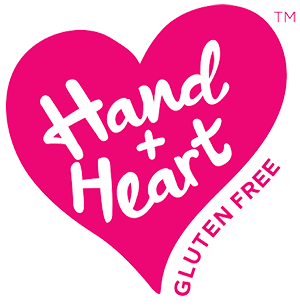Baking is both an art and a science. When it comes to gluten-free baking, the challenge is to replicate the texture and structure that gluten provides in traditional baked goods. Enter Xanthan Gum and Psyllium Husk – two popular ingredients that have revolutionized the world of gluten-free baking. Let’s dive deep into understanding these two elements and their significance.
What is Xanthan Gum?
Xanthan gum is polysaccharide, which simply means it’s a large molecule made up of multiple sugar units. It’s created when a bacterium known as Xanthomonas campestris ferments sugars. The result is a powder that’s soluble in water and forms a viscous liquid when mixed, similar to the consistency of honey or syrup.
Benefits in Baking:
Texture and Consistency: Xanthan gum acts as a stabilizer and thickener, giving baked goods a smooth texture.
Binding: In the absence of gluten, xanthan gum helps ingredients bind together, preventing crumbling.
Moisture Retention: It helps in retaining moisture, ensuring that gluten-free baked goods don’t dry out quickly.
What is Psyllium Husk?
Psyllium husk comes from the seed of the Plantago ovata plant. It’s a form of soluble fiber that expands and becomes gel-like when mixed with water. This property makes it a valuable ingredient in gluten-free baking.
Benefits in Baking:
Elasticity and Structure: Psyllium husk provides elasticity, mimicking the role of gluten in traditional baking. This results in a better crumb structure in bread and cakes.
Moisture Retention: Just like xanthan gum, psyllium husk helps in retaining moisture, ensuring baked goods remain soft and fresh.
Digestive Health: As a bonus, psyllium husk is beneficial for gut health, aiding in digestion and promoting regular bowel movements.
Which is Better for Gluten-Free Baking?
While both xanthan gum and psyllium husk serve similar purposes in gluten-free baking, their best use can vary based on the type of baked good:
Breads and Rolls: Psyllium husk is often preferred for bread and rolls due to its ability to provide elasticity and structure, resulting in a chewy texture.
Cakes and Muffins: Xanthan gum is a favorite for cakes and muffins as it offers a soft and tender crumb.
Cookies: Either can be used, but xanthan gum often gives a slightly chewier texture, while psyllium husk can make them a bit more cake-like.
Pies and Pastries: Xanthan gum is commonly chosen for its binding properties, ensuring that pie crusts and pastries hold together well.
The Importance in Gluten-Free Baking
Gluten is a protein found in wheat, barley and rye. It provides elasticity, structure, and moisture retention in traditional baked goods. For those with celiac disease or gluten sensitivity, consuming gluten can lead to adverse health effects. Hence, the challenge in gluten-free baking is to find substitutes that can replicate the role of gluten.
Xanthan gum and psyllium husk are game-changers for gluten-free baking. They ensure that gluten-free baked goods have a beautiful texture, structure, and moisture content, making them almost indistinguishable from their gluten-containing counterparts. Without these ingredients, gluten-free baking would be a lot more challenging and less satisfying.
The Takeaway
Both xanthan gum and psyllium husk are true staples in the world of gluten-free baking. While each has its unique properties and best uses, they share a common goal: to make gluten-free baked goods as delicious and satisfying as traditional ones. Proper amount used in your gluten free baking will depend on your recipe, gluten free flour used and desired end results. Too much will yield disastrous baked goods and too little will not optimize the results you’re aiming for.
Hand + Heart Gluten Free flour blends, mixes and recipes has been carefully crafted and developed to include either or both of these ingredients to ensure the end results of your baked goods are amazingly divine every time. We figured it out so you don’t have to!
So, the next time you bite into a soft, chewy gluten-free cookie or a slice of bread, you might just have one (or both) of these ingredients to thank!



